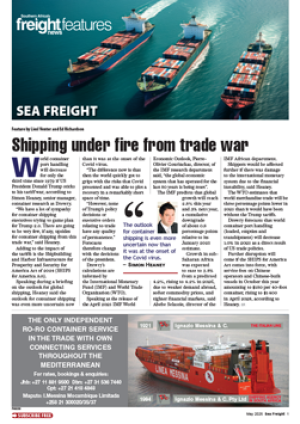THE CUT in training funding as a result of the introduction of the new Transport Sectoral Education Transport Authority (Seta) should not stop companies from continuing with their training efforts, executive officer of the Forwarding and Clearing Chamber of the new Seta, Charles Dey told FTW.
The new Seta, which has eight chambers - forwarding and clearing, aerospace, road freight, rail, road passenger, taxi, maritime and freight handling - replaces the Maritime Industry Training Board which ceased to exist on March 1.
Companies should continue the momentum started by the MITB and should not get bogged down now with the introduction of the new system, he said.
It was vital to continue the training which had been started in the industry and which had brought about many positive results, he said.
Dey said he hoped that companies would use the savings they would be making by no longer purchasing stamp levies and allocate them back to training.
The freight forwarding industry, however, has expressed reservations about the new system.
Previously, companies paid R2 training stamp levies, which represented about 2% of the industry salary bill, to the MITB which was used for education and training. With the new system, companies have to pay 0.5% of their total salary bills to the South African Revenue Service which in turn will give Government 20% back for the training of unemployed people, and 80% back to the Seta.
The end result is that there would only be 0.5% of the 80% as opposed to the current 2% of 95% available for training, which was expected not to be enough, said John White, president of the South African Association of Freight Forwarders.
The new chamber has been tasked with carrying out all the requirements in terms of the Skills Development Act including the disbursement of funds collected in terms of the Skills Levy Act.
On a positive note, the Transport Seta: Forwarding and Clearing is well-organised because it emanates from a well-organised MITB. However, it will stand or fail by the involvement of industry at the highest level in the new chamber. We have employer representatives at the highest level, such as director and executive levels, and senior trade union representatives who have been involved with the MITB since its inception, he said.
Copyright Now Media (Pty) Ltd
No article may be reproduced without the written permission of the editor
To respond to this article send your email to joyo@nowmedia.co.za
